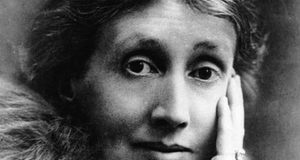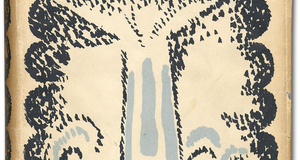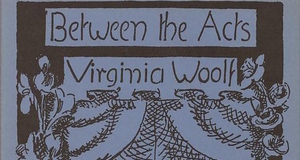Exploring "The Still Place that Lies About the Heart of Things:"Visibility for Women in the Works of George Eliot and Virginia WoolfThe parallels between Woolf and Clarissa Dalloway illustrate how Woolf’s employment of her own experiences transcends autobiographic writing. Woolf experienced the death of both her mother and her sister. She continued to struggle with depression and mood swings for much of her life. She received treatment several times and continued working through most of her adult life, but she ultimately lost this battle and committed suicide. Clarissa herself witnessed the death of her own sister, and has the following commentary on the tragic event: “Those ruffians, the Gods, shan't have it all their own way, – her notion being that the Gods, who never lost a chance of hurting, thwarting and spoiling human lives were seriously put out if, all the same, you behaved like a lady. That phase came directly after Sylvia's death – that horrible affair. To see your own sister killed by a falling tree… before your very eyes… was enough to turn one bitter. Later she wasn’t so positive perhaps; she thought there were no gods, no one was to blame; and so she evolved this atheist’s religion of doing good for the sake of goodness” (62). Clarissa’s response to her sister’s death reflects Woolf’s own experience with trauma. She has become embittered by the event, but chooses to live a purposeful life anyway. Woolf suffered insurmountable trauma and illness, but still worked for most of her life creating ethically purposeful literature. Although their stories end differently, both faced struggle by attempting to create purpose for themselves. The differences between Clarissa and Woolf are an essential component in further understanding how Woolf discusses the versatility of women’s experiences that must be made visible. We know that Clarissa is not particularly interested in intellectual pursuits: “She knew nothing; no language, no history; she scarcely read a book now except memoirs in bed…” (8) And although, as discussed, Clarissa is an ethically motivated character, the outlet for her ethical actions is a social one. Woolf, on the other hand, rejected such a socialite lifestyle in favor of writing, feminism, and such pursuits as membership in the highly intellectual Bloomsbury Group. By asking us to sympathize with Clarissa, a character who leads what would typically be considered a trivial existence, and emphasizing the character’s ethical and feminist motivations, Woolf makes a profound statement. She is arguing that ethical action can take place in a wide variety of contexts; not simply through the hyper-intellectual outlets she chose for herself. This is another way in which Woolf makes it clear that the whole spectrum of women’s lived experiences is significant and needs to be made visible.Woolf also writes that her “Characters are to be merely views; personality must be avoided at all costs” (107). Cox provides further evidence of this by explaining that, when writing Mrs. Dalloway, Woolf first worked out the dialogue for Clarissa’s party (the final scene of the novel), and then determined which characters would say which lines. So, rather than carefully crafting her characters as people like Eliot does, Woolf instead uses them as “views about the nature of the mind and its contact with reality” (Cox, 107). In this way, Woolf’s characters push back against what is externally presented as reality (including such influences as the Aristotelian plot structure) and argue for more subjective modes of reality. By writing her characters as views instead of personalities, Woolf has the freedom to cross gender lines in order to inject her own subjectivity in the novel. This is especially evident in the character Septimus Smith, a shell-shocked war veteran who struggles with his own mental and emotional stability throughout the novel as a result of the grief and trauma he experienced during the war. He eventually commits suicide. Shalom Rachman provides the following insight about Septimus’s role in the narrative: We know from a statement made by Virginia Woolf herself that in the original plan for Mrs. Dalloway there was no place for Septimus, and that Clarissa was intended to commit suicide at the end. Subsequently the story of Septimus was introduced and it is he, as Clarissa’s double, who commits suicide. Obviously Virginia Woolf brought in Septimus not so much to state his own case as to enhance that of Clarissa, to bring to the surface something buried deep in her own life (5). Clearly, Septimus acting as Clarissa’s double fills the gaps between Woolf’s subjective experience and Clarissa’s. We see important parts of Woolf in Septimus that we do not see in Clarissa. But why does Woolf choose Septimus for this role? Why not let Clarissa’s story more fully reflect Woolf’s own life and end in suicide? The reason likely has much to do with the arguments Woolf is making about gender through the novel. Clarissa is a socialite who operates in a realm of domesticity. Her actions may be politically powerful, but they are powerful in a quiet way as she operates within a role that appears socially acceptable on a surface level. As a result, it is at least somewhat acceptable for Clarissa to be emotionally vulnerable. Septimus, on the other hand, is a former soldier who operates in the world of masculinity. He has seen unspeakable tragedy in the war, but his expectations for handling such grief are quite different from those assigned to Clarissa. Susan Bennett Smith frames these gendered differences in the following way: One of the ways to interpret the Doppelganger theme is to see Septimus and Clarissa as mourners…From this perspective Clarissa represents sane bereavement, whereas Septimus's mourning is pathological… Because Septimus has internalized an excess of stoicism in the Great War, he reacts by expressing his grief in self-abnegation. Men, especially soldiers, don't cry…. Septimus's own way out is suicide (n. pg.). Septimus’s character, then, allows us access to what Woolf subjectively experiences as a result of her own gendered multitudes. The stoicism demanded of the veteran is in its own way as limiting as the rules imposed on Woolf as a woman writer. As discussed, Woolf invested much of her time in intellectual pursuits which, in her time, was more associated as a masculine interest then a feminine one. As a result, Woolf’s experiences likely mirrored Septimus’s. As a participant in the intellectual community she may have felt that her emotional vulnerabilities undermined her credibility. Like Septimus, her way out was suicide. This is not to conjecture that any one factor caused Woolf to commit suicide. Instead, it is a way of understanding how Woolf expressed the nuances of her own subjectivity and gendered experiences through the respective subjectivities of her characters. Like Woolf, Eliot also employs her own subjectivity to forward the narratives she creates. Woolf herself writes the following of Eliot’s work: “In Adam Bede there is a hint of [Eliot] in Dinah. She shows herself far more openly and completely in Maggie in The Mill on the Floss… She wrote more and more from the personal standpoint, but she did so without the unhesitating abandonment of the young” (4). In other words, when Eliot injects herself into her characters, it is more than just personal writing. Rather than creating the effect of a diary or memoir, Eliot is careful in her crafting of characters and narratives. The effect is as follows: “she gathers in her large grasp a great bunch of the main elements of human nature and groups them loosely together with a tolerant and wholesome understanding which… has not only kept her figures fresh and free, but has given them an unexpected hold upon our laughter and tears” (Woolf, 3). So Eliot’s characters’ subjective experiences not only shape their own realities, but they also reflect a lived reality formed by subjective experiences of Eliot’s own. This observation matters because it illustrates to readers that fiction is not merely fictional. Eliot’s characters are so well-crafted and evocative of reader’s sympathies largely because she has injected her own subjectivity into them, which means that they operate not simply as stories but as artifacts of the human experience. The larger social implications of this reading of Eliot’s texts will be discussed at greater length later. What should be noted here is that Eliot’s projection of herself onto her characters transcends the autobiographical and informs us that truth can only be created through the private experiences such as the ones Eliot transcribes from her own life and onto her characters. Furthermore, what we know of Eliot’s life gives us important insight into how and why she relies on subjective experience as truth-shaping material in her work. For instance, Eliot’s abandonment of the Christian faith was likely what lead her to such thinking. Once Eliot came to the conclusion that there was no god in which to find significance or truth, an emphasis on the common life seemed to fill the void: “Among [her characters] the search for higher forms of conduct seems irrelevant; their joy in life is a solution in itself” (Cox, 16). Eliot’s emphasis on day-to-day existence reveals the ideology that there is nothing larger than the individual’s own experiences. There is no external force that grants us real truth or answers, so we must make sense of our own subjective experiences in order to develop moral and ethical understanding. Cox also notes the linguistic evidence of Eliot’s personal struggle with religion present in her own work: “She uses religious terms to describe human experiences, and so invests them with an heroic eternal quality. A good example is when Esther chooses to marry Felix [in Felix Holt]: “It is only in that freshness of our time that the choice is possible which gives unity to life, and makes the memory a temple where all relics and all votive offerings, all worship and grateful joy, are an unbroken history sanctified by one religion.” (273-4) George Eliot repeatedly uses such religious language as a means of giving dignity to human action” (23). Her use of religious language replaces deities with subjective experience. Some may contend that there is no need for religious language at all if there is nothing larger than subjectivity, but Eliot’s language acts as a means of breaking the paradigm of external forces shaping truth and puts subjectivity in their place. Not only does Eliot’s language emphasize the dignity of human action, but it also sets up human experience as a replacement for the religion that failed Eliot in truth-seeking. When she says that “the choice… gives unity to life,” Eliot is saying that our experiences are what hold us together as human beings. There is no external force that does this, and thus the “one religion” which Eliot argues sanctifies us is simply the human experience, that is, the collective of subjective consciousnesses. Eliot’s use of such theological language not only reveals her own Christian background, but also reveals what became both spiritually significant and critically important to her after her abandonment of that faith. Eliot seems to have replaced her faith in god with a steadfast faith in human experience. This religious devotion to subjectivity is evident in her writing not only linguistically, but in the fact that there is no truth for her characters other than what they can find in their own perceptions.Continued on Next Page » Suggested Reading from Inquiries Journal
Inquiries Journal provides undergraduate and graduate students around the world a platform for the wide dissemination of academic work over a range of core disciplines. Representing the work of students from hundreds of institutions around the globe, Inquiries Journal's large database of academic articles is completely free. Learn more | Blog | Submit Latest in Literature |


















